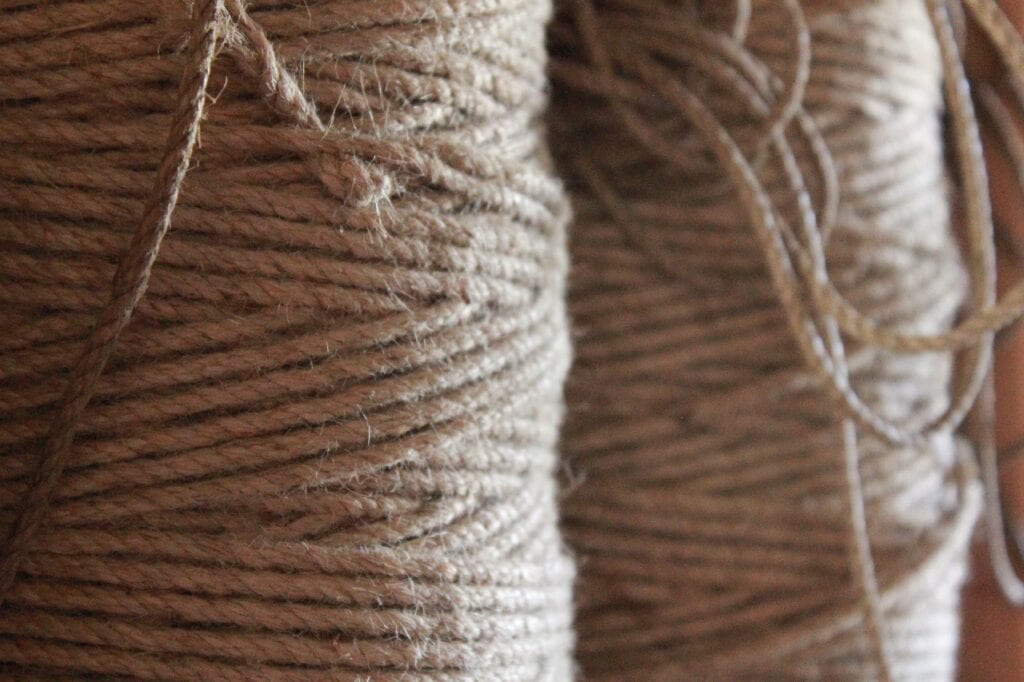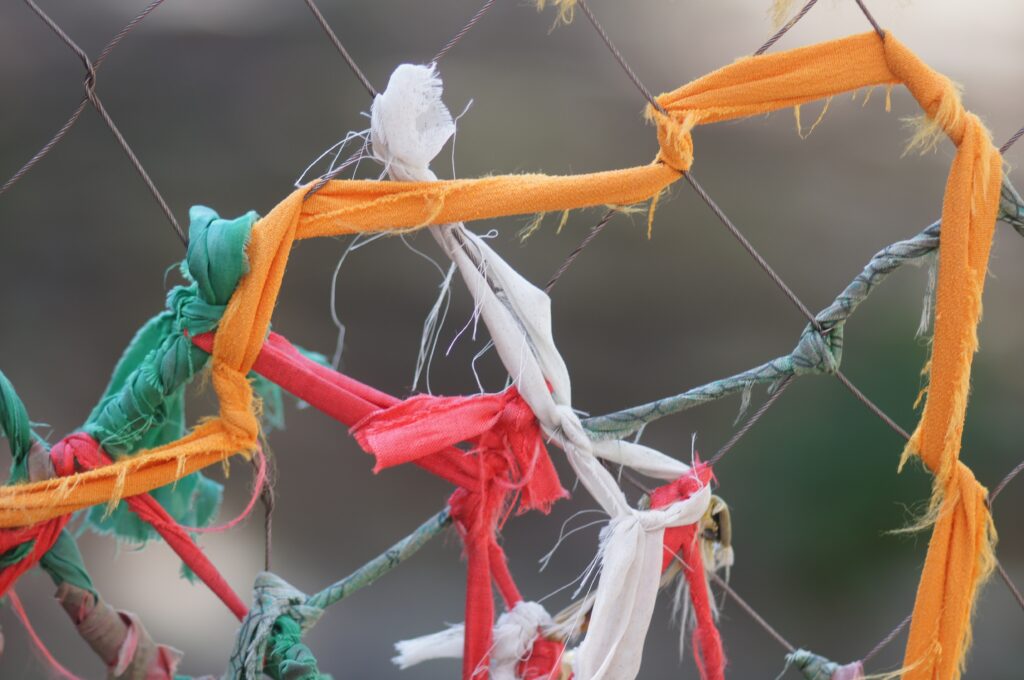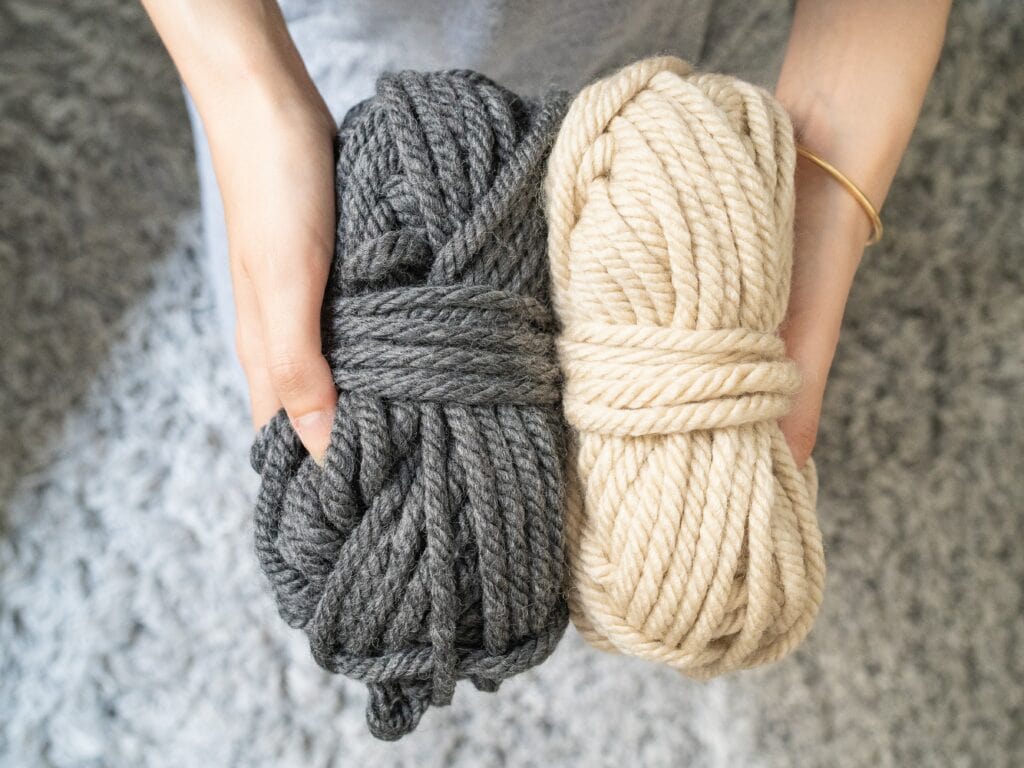How to Make Rope from String: 7 Simple Steps
-

- Last updated:

Making a rope from strings is an age-old art with practical applications today. While it might seem daunting, with the proper instructions, anyone can accomplish it. If you have the right supplies and take your time, you can make a beautiful rope from a string either by hand or using a machine in just a few simple steps.
In this article, we will provide a step-by-step guide on how to make rope from string using only basic materials and tools. So whether you’re looking for a new hobby or need some rope for a project, read on for all the details!
 Before You Start: Preparations
Before You Start: Preparations
Making rope from strings is surprisingly easy and can be done using items found around the house. Before you start, you will need to gather all the necessary materials and tools.
- A spool of string (like jute, hemp, cotton, or nylon)
- A pair of scissors or a knife for cutting the string into even pieces
- A large surface for winding the rope onto (e.g., a tabletop or floor)
- Something to use as a weight (e.g., heavy books)

The 7 Simple Steps on How to Make Rope from String
1. Cut the string
Begin by cutting the string into even pieces. Ensure that the strings are of the same thickness and length. Remember, if you intend to make a thick rope, you have to gather more strings, but if you make a thinner rope, begin with roughly six pieces. Additionally, when cutting your strings to length, remember that your rope will take a different length from the strings since it will become shorter as you twist. Therefore, ensure to cut the strings at least a few inches longer than your desired rope length.
2. Tie the ends

Lay the strings down and tie them together in a knot, ensuring that both ends are even. This will become the center of your rope which you can begin to twist around.
3. Start twisting
Take one end of the string and begin twisting it around the knot. Make sure to weave in a consistent direction, as this will make your rope stronger and more even. As you twist, the strings will begin to bind together and form a stronger rope.
4. Add tension

As you twist, it is essential to apply pressure to the strings, or else they will loosen, and your rope won’t be as strong. To add tension, you can either pull the strings away from each other as you twist. Alternatively, as you twist, you can place weight on the rope, such as heavy books or a metal clamp.
5. Coil your rope
As the strings begin to bind together and the rope becomes thicker, you can start coiling it on your large surface. Ensure that the coils are tight and that you use even pressure when spiraling. You can add more weight or tension to the rope as you coil if desired.
6. Secure the rope

Once the rope is coiled, tie the ends together in a tight knot. You can also use a thin wire or dental floss for extra strength.
7. Clean and trim the rope.
Trim any loose strings and remove any excess material. You can also use a wire brush to clean the rope if desired.
 Making Rope from String Using a Machine
Making Rope from String Using a Machine
If desired, you can use a rope-making machine to speed up the process. The machine will twist and coil the ropes for you but requires more setup and materials. You’ll need to gather a spool of string, pulleys, a motor (if manual winding), twisters, and a few other small tools.
You can find instructions online for setting up the machine and operating it safely. Once you have set up the machine, you can thread the string through the pulleys and twisters. The motor will then drive the twisters to twist and coil the rope for you.

How Is Natural Rope Made?
Natural rope is made from natural plant fibers such as jute, hemp, cotton, sisal, abaca, and coir. These materials are spun together with a spinning wheel, twisting them into a rope. The rope is twisted in the opposite direction for added strength and durability. This twisting goes in a zigzag pattern, and when the rope is complete, it will have a textured appearance.
The rope can be dyed and treated to create a variety of colors and textures, making it a versatile material. It can be used for various purposes, from nautical applications to decorative arts. They are also often used in industrial and cargo-handling applications. With proper care and maintenance, the natural rope can last for years and will not quickly degrade or break.
Making natural rope is time-consuming, requiring skill and patience to create something of high quality. But if you are looking for a strong and reliable rope, then natural rope might be the best choice for your project. With suitable materials and techniques, you can create a durable rope that will stand up to the test of time.
The Various Uses of Rope
A rope is a versatile material used for many different applications.
- Camping & Hiking: A rope is often helpful when camping and hiking. You can use it to tie down tents, secure items to a backpack, and build shelters in the wilderness. Alternatively, you can use it for recreational activities like rock climbing and rappelling.
- Boating: When it comes to boating, the rope is an essential item. You can use it to tie the boat to a dock, secure cargo in the ship, and ensure that items don’t float away. For a beginner, it is crucial to know the basics of tying knots for boating purposes.
- Fishing: When fishing, you can use a rope to make nets, create traps, and secure the fishing line. It can also be used to attach weights and sinkers to the line and for tying lures or bait onto it.
- DIY Projects: You can use a rope for various DIY projects. Whether making your own hammock or clothesline or creating a pulley system, a rope will always play a role.
 Frequently Asked Questions
Frequently Asked Questions
What Is the Best Material for Making Natural Rope?
The best material for making natural rope is hemp. Hemp is a strong and durable fiber resistant to rot, mildew, and abrasion. It is also lightweight, making it easier to work with and transport. Additionally, it has a natural, earthy look that adds to the aesthetic appeal of the rope. Other natural fibers, such as jute, sisal, abaca, and coir, are also suitable for making rope. The choice of material will depend on the desired use and strength of the rope, and each material will require a different approach.

What Is the Most Robust Material for Making Rope?
The most robust material for making rope is nylon. Nylon is an incredibly strong synthetic fiber that can be woven or braided into a very durable and strong rope. It is lightweight, easy to work with, and resistant to wear and tear. It can also be made in various colors, making it a versatile and aesthetically pleasing material. However, making a rope from nylon will require specialized tools and techniques, so it is best to consult a professional if you decide to use this material.
Nylon rope can be expensive, but it is an excellent choice for those looking for strength and reliability. Its strength makes it ideal for various purposes, from boating and fishing to industrial applications. It is also often used in the military because it is solid yet flexible and can withstand extreme conditions.
Which Rope Type Does Not Rot?
Polypropylene rope is a plastic and synthetic fiber that does not rot. It is exceptionally resistant to abrasion, sunlight, and water. It is also lightweight, making it easy to work with and transport. This type is commonly used in boating, fishing, and outdoor activities. It is also often used in industrial and cargo-handling applications because it does not rot or degrade quickly.
 Conclusion
Conclusion
Making rope from strings is a great way to make your own reliable and strong rope. Whether using natural fibers or synthetic materials, you’ll need the right tools and techniques to ensure that your rope is high quality. With the right skills, you can create a durable and robust rope that you can use in various applications. So, go ahead and give it a try!
Featured Image Credit: JumpStory
Contents
 Before You Start: Preparations
Before You Start: Preparations Making Rope from String Using a Machine
Making Rope from String Using a Machine